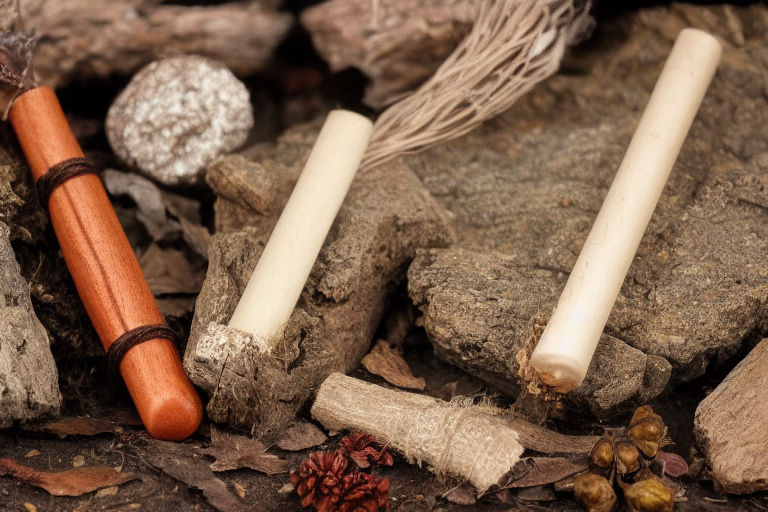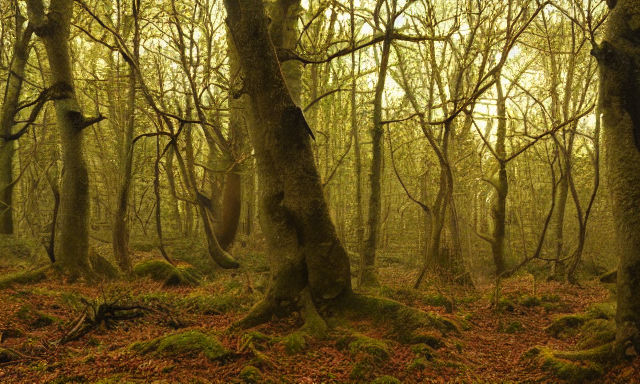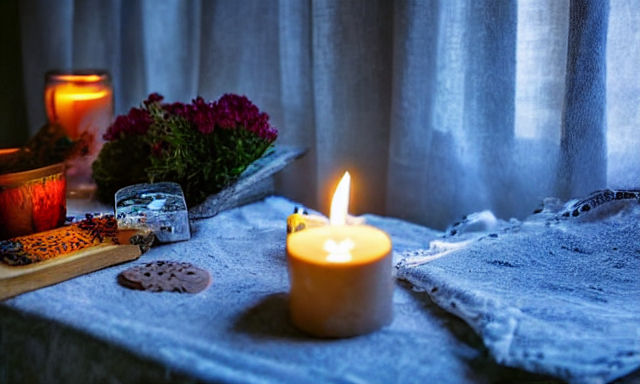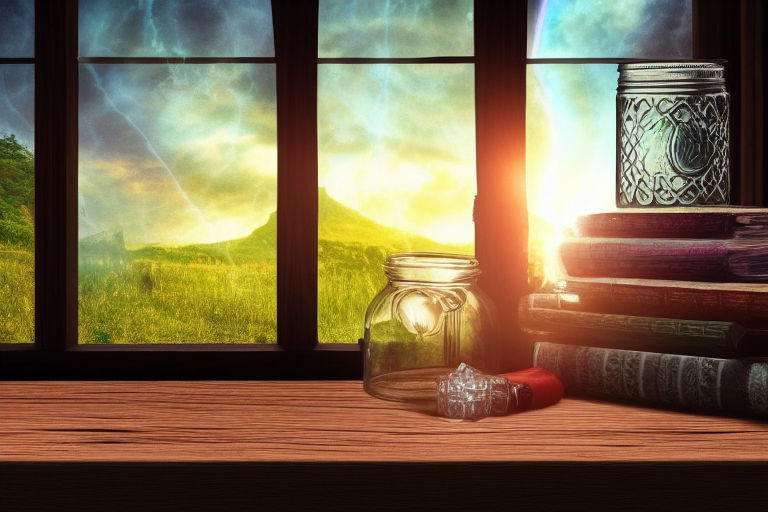When is Samhain?
Samhain, or Halloween, is an annual event that celebrates the end of the year and the coming of winter. The date of Samhain varies depending on where you live. During medieval Ireland, Fionn mac Cumhaill, a legendary figure, would spend his time studying under the Cethern son of Fintan. In addition to studying, he would travel to the sidh mound where the fairy Ele lived. Ele was rumored to be the most beautiful fairy in Ireland, but was unimpressed by the multitude of suitors who sought her hand. As a result, Fionn mac Cumhaill would hide near the sidh mound of Ele.

Festival of the dead
In the past, Samhain was regarded as a liminal time between worlds. The ancient Celts believed that the spirits and fairies of the Otherworld were present at this time, and their presence was believed to help them and their livestock survive the cold winter. To appease the spirits, offerings of food and drink were left for them. The dead were also believed to revisit their homes at this time, and feasts were often held to welcome them home.
Today, the celebration of Halloween is based on ancient Celtic traditions, and its origins can be traced back to the Celtic festival of Samhain. This festival was the last harvest festival, and the dead were believed to enter the spirit world during this period. This festival also marked the beginning of the darker half of the year, when the veil between the two worlds was thinnest. In addition to celebrating the end of summer, it was also the time for stock-taking before winter began.
The Celts celebrated Samhain by putting offerings on their doorsteps and dressing up in costumes to appease the spirits. This was a time to honor the departed and to protect them from evil spirits. On Samhain, people left offerings to the spirits and fairies. The Celts also believed that the spirits were necessary for human life.
Samhain’s name is derived from the Celtic deity of death, Arawn. Celts had many different ideas about the afterlife. Their closest representation of the underworld was the god Arawn. This god was a skilled magician and ruled the underworld, or Annwn. There is some evidence that he was related to the legend of Arthur.
Festival of druids
The Festival of Druids on Samhain is a traditional pagan festival celebrating the change of the seasons and the turn of the year. Druids believe that spirits dwell in the earth and are embodied in nature. Their rituals celebrate the turn of the seasons and renew their commitments to their community. They celebrate the end of summer and the beginning of winter by lighting fires and leaving the hills to live in winter quarters. They gathered around the fires to talk about their religious philosophy and tell stories.
Druids considered Samhain an auspicious time to practice divination. Celts believed the Celtic Otherworld existed side-by-side with the human world. During Samhain, passage between the two realms is easier and spirits can act with greater agency on earthly affairs.
Druids also believed that on Samhain, the veils between the worlds were thin. It was also believed that evil spirits were frightened away during Samhain and it was wise to remain near a bonfire. The druids used to light massive bonfires during the festival. In addition, they would relit the fires in their homes in order to protect them during the winter.
In Irish mythology, Samhain was linked to many supernatural events, including the Second Battle of Moytura. One of the most important texts in Irish mythology deals with this important battle between the spiritual beings known as the Tuatha De Danann and the Fomoire. This was a crucial event in the development of Irish mythology.
The Celtic Festival of Samhain has been celebrated for centuries. It celebrates the transition from the harvest season to winter. Historically, Samhain has been associated with the Gaels. Today, it is believed that the festival originated in ancient Ireland.
Festival of witches
The traditional Irish holiday of Samhain, also known as Halloween, marks the time of year when the veil between this world and the next is the thinnest. The faeries migrate to their winter barrows on this night. People often tell fortunes and prophesy on this night. In fact, a Scottish legend tells of a young maiden named Tam Lin who saved her beloved from a group of faeries.
In ancient Celtic traditions, Samhain is one of the four sacred times. The Celts believed that it was the beginning of the Celtic new year. It also marked the end of the harvest season and the beginning of the winter season. While many of the aspects of Samhain are related to death and the spirit world, some people celebrate it as an opportunity to reconnect with their ancestors.
Although there is no historical evidence of the origins of Samhain, it dates back centuries. The first recorded mention of the holiday was found in a bronze calendar engraved in Coligny, France, in the first century B.C.E. In ancient Celtic beliefs, Samhain was associated with the dead. The god Bael, the lord of the dead, fought with Samhain six times a year, winning each time. Samhain is sometimes confused with May Day.
The Celtic New Year festival Samhain began with a variety of rituals, including burning herbs and walking between bonfires with cattle. This was thought to have purifying properties, especially since the smoke from burning herbs was thought to rid the cattle of fleas.
Festival of fairies
The tradition of celebrating the Festival of Fairies on Samhain has roots in Celtic beliefs. Celtic people believed that the veil between the worlds of spirit and earth is thin during this time. They also believed that spirits from the Otherworld would visit humans. During Samhain, fairies and spirits would visit those who had passed away, leaving offerings and sacrifices for the dead to enjoy.
By the 7th century, many countries in Western Europe had embraced Christianity. The Romans had traditionally celebrated the festival of the dead in May, but had decided to shift it to November in honor of Catholic saints. Pope Gregory III changed the date of this festival and made it an annual event instead of a pagan festival. The resulting change paved the way for the modern day celebration of Halloween.
Halloween’s origins can be traced to the ancient Celtic festival of Samhain. This festival marks the transition from harvest season to winter and the start of the dark period of the year. It is believed to have originated in Ireland. Celtic folklore also teaches us that Samhain marks the midpoint between the light and dark half of the year. In this way, the transition from summer to winter was a time when the spirits of the dead could pass on to the other side.
Early Irish manuscripts mention the festival’s magical significance. In the Middle Ages, Fianna and other warriors would retreat to their winter camps and quarter the population until Beltainne. Celts also believed that the boundary between the worlds was broken during Samhain, so they would make offerings for the Sidhs and leave offerings for them. Other Celtic practices included dressing up as monsters and animals in order to avoid encounters with fairies.
Festival of demons
Samhain is the name of an ancient Celtic month that marks the end of the summer season and harvest. This ancient Celtic festival was connected with several important events from Irish mythology. However, the festival has changed from its Celtic origins as it spread to other countries. In modern times, it is celebrated during the daylight portion of the Thanksgiving holiday on November 1st.
As the days grow shorter and the nights grow cooler, the ancient Celtic tradition of Samhain takes on a darker meaning. This time is believed to be when the veil between the corporeal world and the spirit world loosens and the dead may mingle with the living. This ancient Celtic festival marked the end of the harvest, and served as the original Halloween.
In Celtic mythology, Samhain is also a time for faeries to migrate from the land of the living to their winter barrows. People believed that faeries would capture families during this time and snatch them off their faerie mounts. This tradition has evolved into the popular tale of Tam Lin, a young maiden who rescued her lover from faeries.
Samhain originated in Celtic Ireland. The ancient Celtic holiday marked the beginning of the darker half of the year. It was also an important time of stock-taking before winter. Celtic people celebrated Samhain by lighting a large bonfire. They believed this would please the gods.
The Celts viewed Samhain as an auspicious time for divination. However, it was also a dangerous time for the Celts. It was also believed that the border between the human world and the Otherworld was more porous during this time. As a result, spirits have a greater ability to influence the human world during this time.







